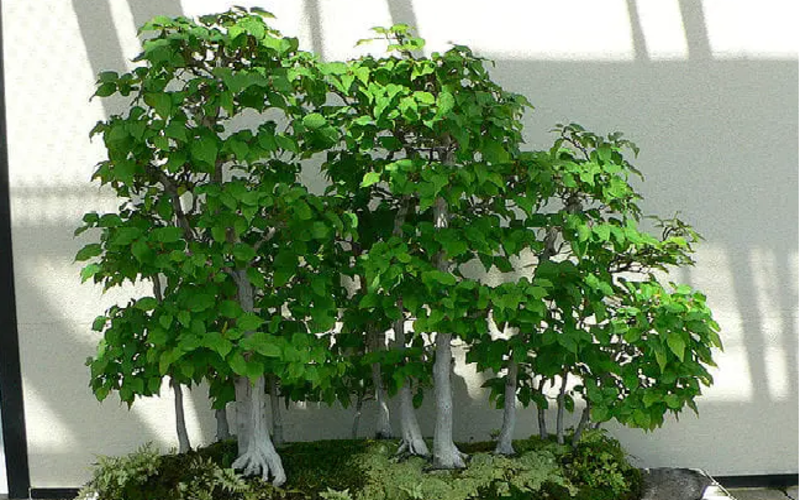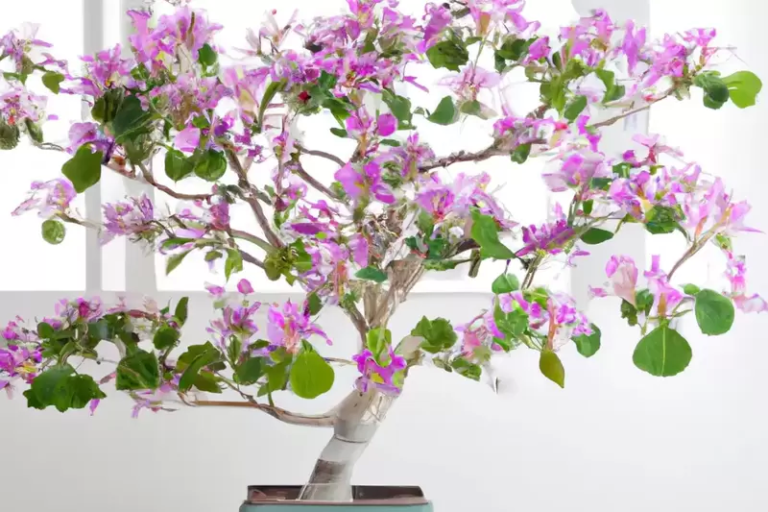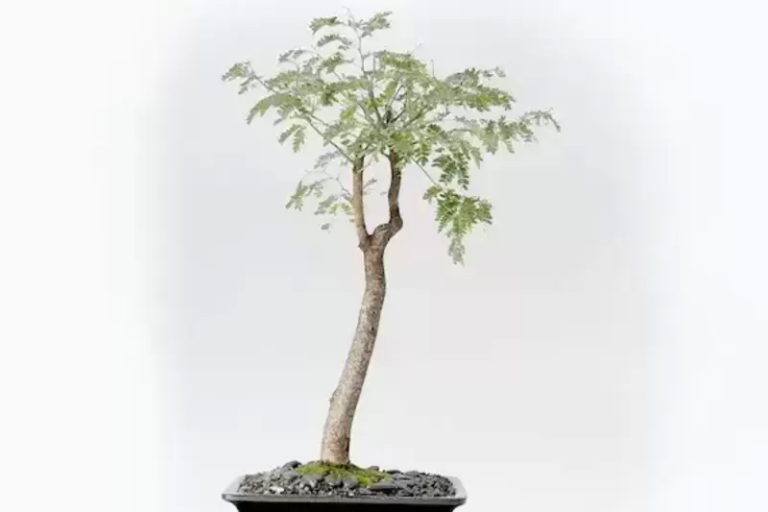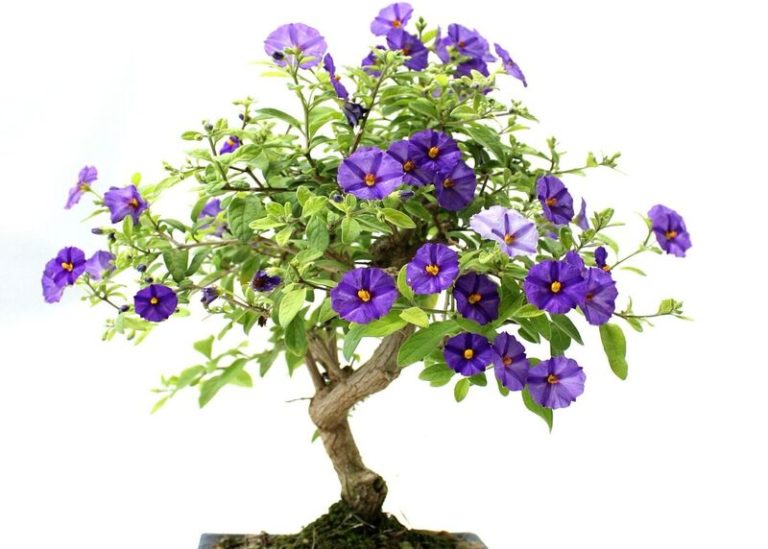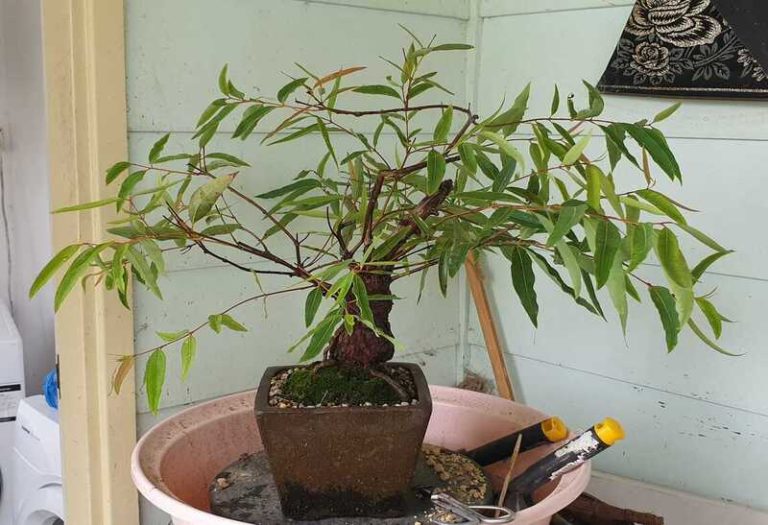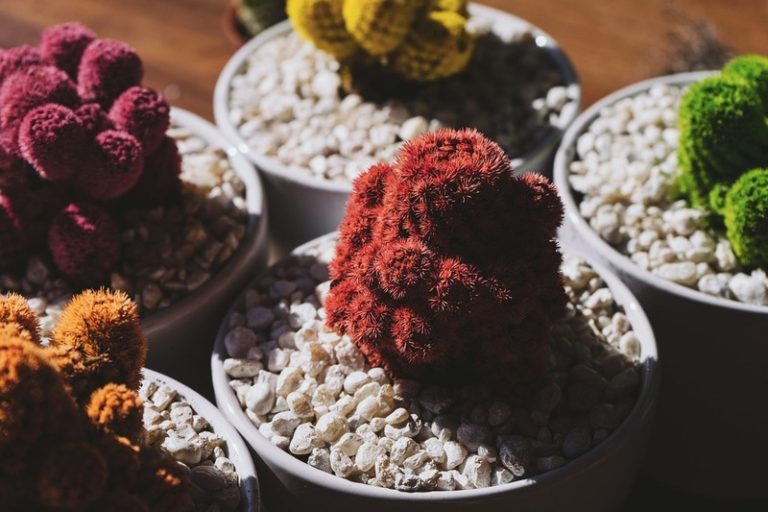Birch Bonsai : The Graceful Miniature Tree
The Birch Bonsai tree is an excellent complement to any garden or indoor space. It is a variety of bonsai tree that is distinguished by its white bark and delicate leaves. In this guide for beginners, we will discuss what Birch Bonsai is, how to care for it, common diseases and parasites, as well as how to display your tree.
What is Birch Bonsai?
Birch Bonsai is a small version of the birch tree. It is grown and trained to resemble a mature tree in miniature form. Birch Bonsai trees are known for their white bark, which peels in thin, papery layers. They also have delicate leaves that turn yellow in the fall. Birch Bonsai trees are a popular choice for Bonsai enthusiasts because of their unique appearance.
Types of Birch Bonsai
There are various varieties of Birch Bonsai, and each has its own distinct characteristics. Here are some frequent varieties of Birch Bonsai:
Paper Birch Bonsai: This type of Birch Bonsai is known for its stunning white bark that peels off in thin, papery layers. It has delicate green leaves that turn yellow in the fall.
River Birch Bonsai: River Birch Bonsai is a type of Birch tree that is commonly found along riverbanks. It has a reddish-brown bark that peels off in small, curly flakes. It has triangular leaves that turn yellow in the fall.
Silver Birch Bonsai: Silver Birch Bonsai is a popular type of Birch tree in Europe. It has a white or silver bark that peels off in thin, papery layers. It has delicate green leaves that turn yellow in the fall.
Yellow Birch Bonsai: Yellow Birch Bonsai is a type of Birch tree that is known for its yellow or bronze bark. It has oval-shaped leaves that turn yellow in the fall.
Each variety of Birch Bonsai has its own distinct attractiveness and qualities. Consider the growing conditions and climate in your region, as well as your personal preference, when selecting a Birch Bonsai variety. With proper care and upkeep, your Birch Bonsai can be a beautiful addition to your garden or interior space.
Birch Bonsai and Its Symbolism
Birch Bonsai is not only a beautiful tree but also holds symbolic meaning in different cultures. Here are some of the symbolic meanings associated with Birch Bonsai:
Renewal and Growth: Birch Bonsai is often associated with renewal and growth. The tree’s white bark is a symbol of purity, and its ability to shed its bark and regrow new layers represents renewal and growth.
Resilience and Endurance: The Birch Bonsai represents resilience and perseverance. The tree’s ability to thrive in hostile environments and endure extreme weather conditions makes it a symbol of resilience and fortitude.
Purification and Cleansing: The Birch Bonsai is a representation of resilience and tenacity. The tree’s ability to thrive in hostile environments and endure extreme weather conditions makes it a symbol of fortitude and tenacity.
Protection and Healing: Birch Bonsai is also a sign of healing and safety. Traditional medicine has used the tree’s bark and leaves for their healing qualities, and the tree is thought to have protective forces that keep away bad things.
Bonsai trees are often seen as signs of peace, unity, and balance in Japanese society. Growing and shaping bonsai trees is seen as a form of meditation that helps people be more aware and find peace within themselves.
Birch Bonsai is not only a beautiful tree, but it is also a sign of rebirth, growth, resilience, purification, security, and healing. It’s a meaningful addition to any yard or indoor area and can make people feel calm and at peace.
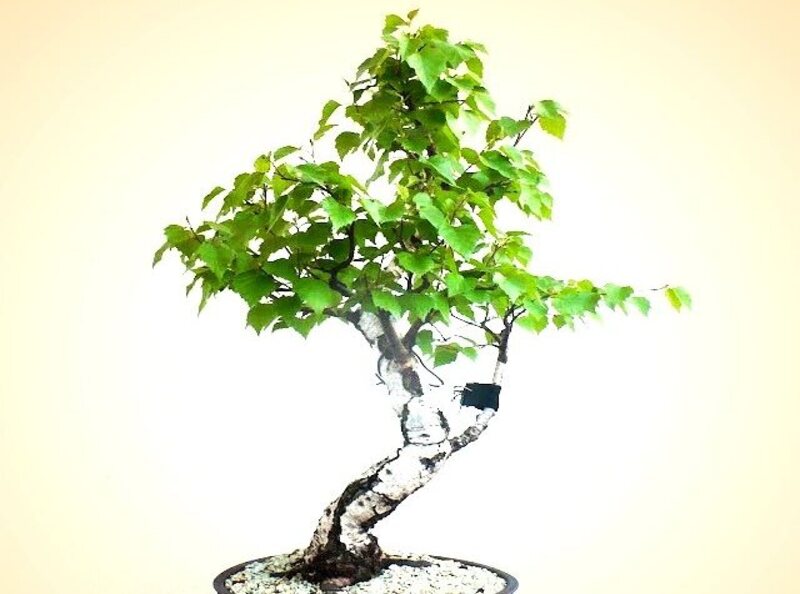
Characteristics of Birch Bonsai
Birch Bonsai is a tiny and fragile tree favored among Bonsai aficionados. Here are some of the qualities that distinguish Birch Bonsai:
- Bark: Birch Bonsai has a distinct white or silver bark that peels off in thin, papery layers. The bark is one of the most attractive features of the tree and makes it a popular choice for Bonsai.
- Leaves: Birch Bonsai features light green leaves that are tiny, delicate, and triangular. In the fall, the leaves turn golden, adding to the tree’s attractiveness.
- Size: Birch Bonsai is a miniature tree that typically develops to a height of 3 to 4 feet. It takes several years for the slow-growing tree to develop the classic bonsai shape.
- Branching: Birch Bonsai has delicate branches that are flexible and easy to shape. The branches have a tendency to grow upwards, creating a unique and beautiful silhouette.
- Growing Conditions: Birch Bonsai prefers moist soil and thrives in areas with moderate to high humidity. It requires partial shade and protection from strong winds and direct sunlight.
- Care: Birch Bonsai requires regular watering, fertilization, and pruning to maintain its shape and health. It is important to remove any dead or yellowing leaves and branches to promote healthy growth.
Birch Bonsai is a unique and beautiful tree with a distinctive white bark, delicate leaves, and a small size. It requires specific growing conditions and regular care to thrive and maintain its shape. With proper care and maintenance, Birch Bonsai can be a stunning addition to any garden or indoor space.
How to Grow Birch Bonsai?
Growing Birch Bonsai is a rewarding and satisfying hobby, but it requires some care and attention to detail. Here are some steps to follow to grow Birch Bonsai successfully:
Choose the Right Birch Tree: Select a healthy Birch tree with a straight trunk, a good root system, and a shape that suits your Bonsai design. Look for a tree with a small diameter trunk that is easy to shape.
Plant the Tree in a Bonsai Pot: Use a Bonsai pot with good drainage to plant the Birch tree. Choose a pot that is slightly larger than the root system of the tree.
Water the Tree Regularly: Birch Bonsai requires frequent watering to maintain its moisture levels. Water the tree when the soil surface becomes dry, but avoid overwatering, which can cause root rot.
Fertilize the Tree: Birch Bonsai needs regular fertilization to promote healthy growth. Use a balanced fertilizer that contains nitrogen, phosphorus, and potassium.
Prune and Shape the Tree: Pruning and shaping are essential for maintaining the shape and health of the Birch Bonsai. Use sharp pruning shears to trim any dead or yellowing leaves, branches, or roots. Use wire to shape the branches and trunk into the desired shape.
Protect the Tree: Pests and diseases can hurt birch bonsai, so it’s important to keep the tree safe. To protect the tree from pests and diseases, use organic herbicides and fungicides.
Provide the Right Growing Conditions: Birch Bonsai requires partial shade, protection from strong winds and direct sunlight, and moderate to high humidity levels.
Growing Birch Bonsai requires meticulous attention to detail, including selecting the appropriate tree, planting it in a Bonsai container with excellent drainage, watering and fertilizing it routinely, pruning and shaping it, protecting it from pests and diseases, and providing the ideal growing conditions. With appropriate care and attention, your Birch Bonsai can develop into a gorgeous and thriving tree.
Benefit of Birch Bonsai
Numerous advantages make Birch Bonsai a popular option among bonsai devotees. Here are several advantages of Birch Bonsai:
- Aesthetic Value: Birch Bonsai has a unique and beautiful appearance with its delicate leaves, white or silver bark, and small size. It adds beauty and charm to any indoor or outdoor space.
- Stress Reduction: Spending time with plants and trees, including bonsai, has been shown to reduce tension and enhance overall wellbeing. Owners of Birch Bonsai can enjoy a tranquil and soothing environment.
- Improved Air Quality: All plants, including birch bonsai, can enhance indoor air quality by absorbing pollutants and emitting oxygen. This can result in a more pleasurable and healthful living environment.
- Educational Value: Growing and caring for a Birch Bonsai can be a fun and educational experience for both children and adults. It teaches responsibility, patience, and the importance of nurturing and caring for living things.
- Creativity and Self-Expression: Growing and shaping a Birch Bonsai allows for creative expression and personalization. It can be shaped in various ways to express one’s creativity and unique style.
- Sense of Accomplishment: Successfully growing and caring for a Birch Bonsai can provide a sense of accomplishment and satisfaction. It takes time, effort, and patience to shape and care for a Bonsai, making it a rewarding and fulfilling hobby.
Birch bonsai offers numerous advantages, such as aesthetic value, tension reduction, enhanced air quality, educational value, creativity and self-expression, and a sense of accomplishment. It is a unique and rewarding pastime that can provide its proprietors with a soothing and enriching experience.
Styling and Design of Birch Bonsai
Styling and designing a Birch Bonsai is a creative and artistic process that requires careful consideration of various factors. Here are some tips for styling and designing a Birch Bonsai:
Choose the Right Style: The style of your Birch Bonsai will depend on your personal preference and the shape of the tree. Common styles for Birch Bonsai include formal upright, informal upright, slanting, and cascade.
Select the Right Pot: The pot should complement the style and size of the tree. Choose a pot that is slightly larger than the root system and has good drainage.
Shape the Tree: Use wire to shape the branches and trunk of the Birch Bonsai into the desired shape. Be careful not to over-wire the tree, as this can damage the branches and trunk.
Prune the Tree: Pruning is essential for maintaining the shape and health of the Birch Bonsai. Use sharp pruning shears to trim any dead or yellowing leaves, branches, or roots.
Balance the Tree: Balance is important in Bonsai design. Ensure that the tree has a harmonious balance between the foliage, branches, and trunk.
Consider the Foliage: The foliage of the Birch Bonsai can be shaped in various ways, such as the cloud, broom, or weeping styles. Choose a foliage style that complements the overall design of the tree.
Add Accents: Adding accents, such as rocks or miniature figurines, can enhance the overall design and add interest to the Birch Bonsai.
Styling and designing a Birch Bonsai requires careful consideration of various factors, including the style of the tree, the selection of the pot, shaping the tree, pruning, balancing, considering the foliage, and adding accents. With proper care and attention, a Birch Bonsai can grow into a beautiful and unique work of art.
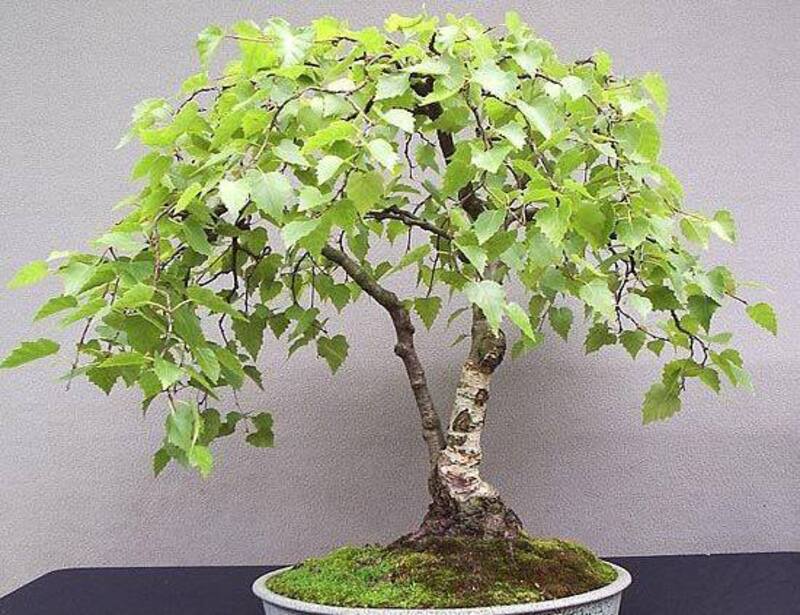
How to Care and Maintain Birch Bonsai
Caring and maintaining a Birch Bonsai requires proper attention and care. Here are some tips for caring and maintaining a Birch Bonsai:
- Watering: Birch bonsai likes wet soil, but it’s important not to overwater. You should water the tree when the soil feels slightly dry to the touch, but don’t let the soil dry out fully. Most plants only need watering once a week, but this can change based on the humidity and temperature.
- Fertilizing: Fertilize the Birch Bonsai during the growth season, which is commonly from spring to early fall. Use a regulated manure that was made especially for Bonsai trees. Follow the directions on the package for how much and how often to use the fertilizer.
- Light: Birch Bonsai prefers bright, indirect sunlight. Place the tree in a location with sufficient natural light, but avoid direct sunlight, which can burn the leaves.
- Temperature: Birch Bonsai prefers cooler temperatures, ideally between 60 and 70 degrees Fahrenheit. Protect the tree from extreme temperatures and sudden changes in temperature.
- Pruning: Prune the Birch Bonsai regularly to maintain its shape and health. Use sharp pruning shears to trim any dead or yellowing leaves, branches, or roots.
- Soil: Use well-draining soil specifically designed for Bonsai trees. The soil should be changed every two to three years to prevent root rot.
- Pests and Diseases: Monitor the Birch Bonsai for pests and diseases, such as spider mites or fungal infections. Treat any infestations or infections immediately to prevent them from spreading.
Caring and maintaining a Birch Bonsai requires proper watering, fertilizing, lighting, temperature control, pruning, soil management, and monitoring for pests and diseases. With proper care, a Birch Bonsai can thrive and grow into a beautiful and healthy tree.
Birch Bonsai Care Sheet
| Aspect | Care Tips |
| Watering | Water when slightly dry. Do not overwater. |
| Fertilizing | Use Bonsai fertilizer. Apply in growing season. |
| Light | Bright, indirect sunlight. Avoid direct sun. |
| Temperature | 60-70°F. Protect from extreme temps. |
| Pruning | Regularly trim dead/yellowing leaves, branches, roots. |
| Soil | Use well-draining Bonsai soil. Change every 2-3 years. |
| Pests & Diseases | Monitor regularly. Treat infestations/infections immediately. |
Proper care for Birch Bonsai involves regular watering, fertilizing, providing the right amount of light and temperature, pruning, soil management, and monitoring for pests and diseases. Following these care tips can help ensure the Birch Bonsai remains healthy and thriving for years to come.
Conclusion:
Birch bonsai is a beautiful and important tree that needs to be cared for and maintained in order to grow well. To grow and take care of a Birch Bonsai, you need to give it the right amount of water, fertilizer, light, temperature, and trimming, as well as use well-draining soil and watch for pests and diseases. By taking care of your Birch Bonsai in these ways, you can make sure it stays healthy and brings you joy for years to come. With its fine leaves and natural beauty, a Birch Bonsai is a stunning addition to any collection and a beautiful symbol of the natural world.
FAQ:
Q: What is Birch Bonsai?
A: Birch Bonsai is a miniature version of a Birch tree that is grown and trained in a Bonsai style. It is a popular choice among Bonsai enthusiasts due to its delicate leaves and natural grace.
Q: How do I care for my Birch Bonsai?
A: To take care of your Birch Bonsai, give it the right amount of water, fertilizer, light, temperature, and trimming. You should also use soil that drains well and keep an eye out for pests and diseases.
Q: Can Birch Bonsai be grown from seed?
A: Yes, Birch Bonsai can be grown from seed, but it can be a slow and challenging process. It is often easier to start with a young Birch Bonsai sapling.
Q: How long does it take for Birch Bonsai to grow?
A: The growth rate of Birch Bonsai will depend on several factors such as the species, age, and growing conditions. Generally, it can take several years or even decades to create a mature and beautiful Birch Bonsai.
Q: How do I shape my Birch Bonsai?
A: To shape your Birch Bonsai, use pruning shears and wire to gently train the branches and foliage. It is important to prune regularly to maintain the desired shape and size.
Q: How often should I repot my Birch Bonsai?
A: Birch Bonsai should be repotted every two to three years, or when the roots have outgrown the container. Repotting should be done during the spring when the tree is actively growing.
Q: Can Birch Bonsai be used for landscaping?
A: Yes, Birch Bonsai can be used for landscaping, especially in small gardens or as a decorative accent. It is important to choose the right location with the appropriate growing conditions to ensure the tree thrives.
Q: How do I protect my Birch Bonsai from winter cold?
A: Birch Bonsai should be protected from extreme winter temperatures by moving them indoors or covering them with a frost cloth or mulch. Make sure to monitor the tree regularly and water it sparingly during the winter months.
Also Read:

